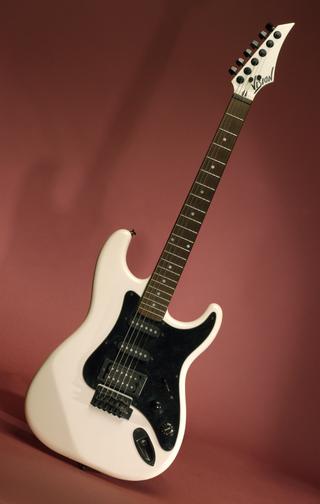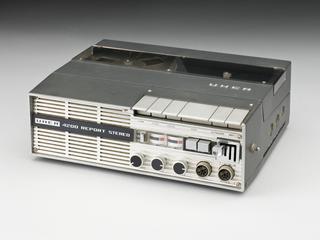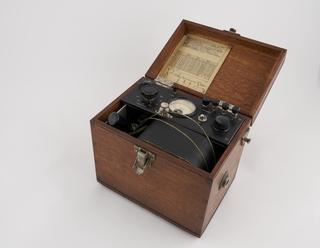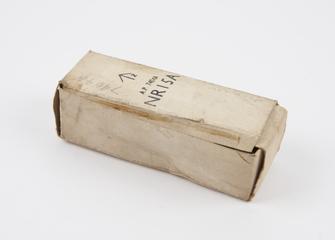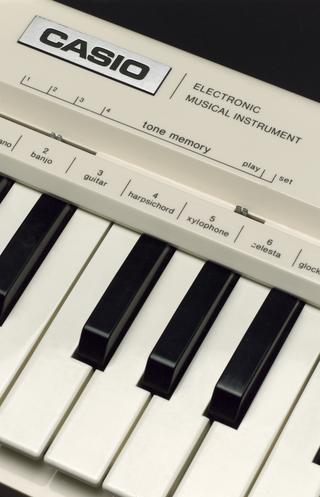
Wheatstone concertina
- maker:
- CHARLES WHEATSTONE and C Wheatstone and Company



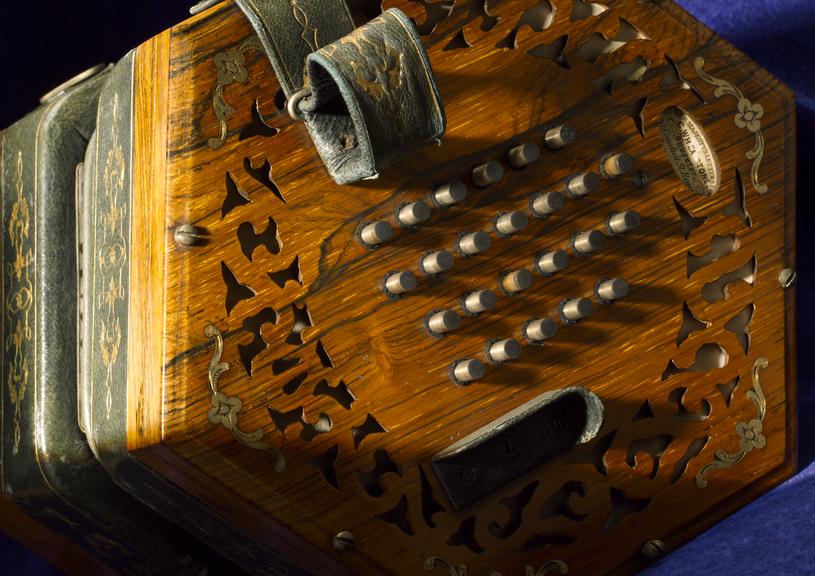

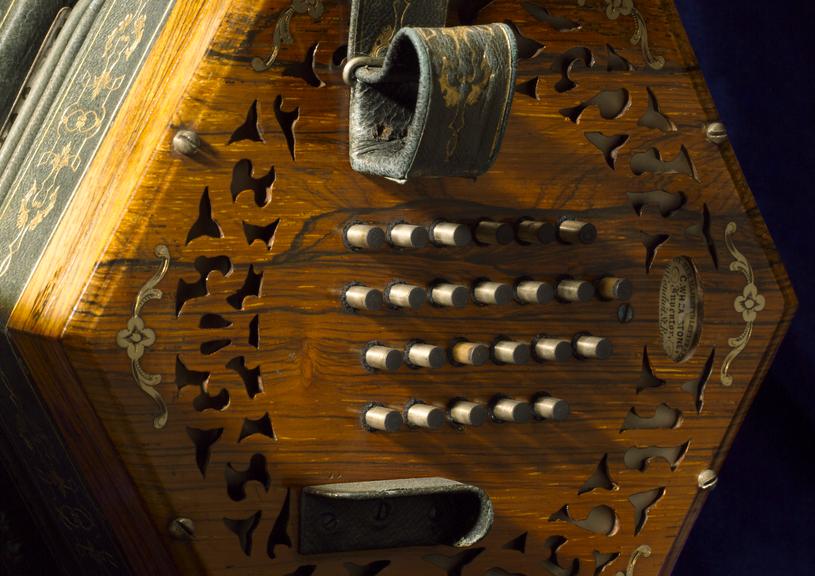
Wheatstone concertina, mahogany, 24 key, invented 1829, patented 19 December 1829, No 5803, Great Britain, by Charles Wheatsone, a musical instrument having buttons in a rectangular arrangement of four staggered rows, with the short side of the rectangle addressing the wrist. The two innermost rows of the layout constitute a diatonic C major scale, distributed alternately between the two sides of the instrument, C-E-G-B-d is on one side, D-F-A-c-e on the other. The two outer rows consist of the sharps and flats required to complete the chromatic scale.
Charles Wheatstone (1802-75), English physicist and inventor, first became known for his work in acoustics, inventing the concertina in 1829. In 1837 he and William Cooke (1806-79) took out a patent for an electric telegraph, which was used in the world's first public telegraph service. In 1841 Wheatstone built the first printing telegraph and in 1845 devised the first single-needle telegraph. It was in a paper to the Royal Society in 1838 that Wheatstone first explained the principle of the stereoscope, a piece of equipment he had been developing.
Details
- Category:
- Acoustics
- Object Number:
- 1857-29
- Materials:
- mahogany (wood)
- type:
- concertina and musical instrument
- credit:
- C Wheatstone and Company; Commissioners of the Great Exhibition of 1851
